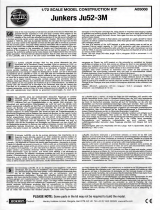Sim-Wings Trondheim Airport Benutzerhandbuch
- Typ
- Benutzerhandbuch

RONDHEIM
AEROSOFT AIRPORT
T
Handbuch-Cover_Trondheim_120x178.indd 1 07.09.20 11:42
Manual

AEROSOFT | AIRPORT TRONDHEIM
Aerosoft GmbH 2020
2 3
Developed by: Jo Erlend Sund, Simen Nygaard
Manual: Aerosoft
Handbuch
Manual
Trondheim
Copyright: © 2020 / Aerosoft GmbH
Airport Paderborn/Lippstadt
D-33142 Büren, Germany
Tel: +49 (0) 29 55 7603-10
Fax: +49 (0) 29 55 7603-33
Internet: www.aerosoft.com
All trademarks and brand names are trademarks or registered
trademarks of their respective owners. All rights reserved. /
Alle
Warenzeichen und Markennamen sind Warenzeichen oder eingetragene
Warenzeichen ihrer jeweiligen Eigentümer.
Alle Urheber- und Leistungs-
schutzrechte vorbehalten
.
Erweiterung für
Add-on for
Microsoft Flight Simulator
AEROSOFT | AIRPORT

AEROSOFT | AIRPORT TRONDHEIM
Aerosoft GmbH 2020
4 5
Inhalt
Zu Beginn ...................................................................6
Systemanforderungen ........................................................... 6
Support ................................................................................. 7
Urheberrechte ....................................................................... 7
Der Flughafen ...........................................................8
Geschichte ............................................................................ 8
Technische Angaben ............................................................ 10
Declared Runway Distances ...................................... 10
Intersection Take-off Distances ................................. 11
ATC Facilities ............................................................ 11
Navigational Aids ..................................................... 12
Szenerie-Features ..................................................... 13
Contents
Starting Off .............................................................14
System Requirements........................................................... 14
Support ............................................................................... 15
Copyrights ........................................................................... 15
The Airport ..............................................................16
History ................................................................................. 16
Technical Information .......................................................... 18
Airport Data ............................................................. 18
Declared Runway Distances ...................................... 18
Intersection Take-off Distances ................................. 19
ATC Facilities ............................................................ 19
Navigational Aids ..................................................... 20
Features ................................................................... 21

AEROSOFT | AIRPORT TRONDHEIM
Aerosoft GmbH 2020
6 7
Deutsch
Support
Support für dieses Produkt wird von Aerosoft bereitgestellt. Wir
bevorzugen ein Supportforum, da es schnell und effizient ist, weil
Kunden sich gegenseitig helfen können, wenn wir nicht im Büro sind:
Support-Forum: http://forum.aerosoft.com/
Wenn Sie E-Mail-Support bevorzugen: https://helpdesk.aerosoft.com/
portal/newticket
Bitte beachten Sie, dass E-Mail-Support langsam sein kann, wenn wir
stark beschäftigt sind (zum Beispiel kurz nach einem Release). Wie
versuchen, binnen 24 Stunden auf Sie zurückzukommen, aber wenn
Sie eine schnelle Antwort möchten, empfehlen wir das Forum.
Support ist uns sehr wichtig. Der Kauf eines unserer Produkte gibt
Ihnen das Recht, uns mit Fragen zu löchern, die Sie vielleicht dumm
finden. Sie sind es nicht. Wir bieten Support auf Deutsch, Englisch,
Niederländisch, Französisch, Spanisch und Portugiesisch.
Urheberrechte
Die Software, das Handbuch und sonstiges zugehöriges Material sind
durch Urheberrechtsgesetze geschützt. Die Software wird lizenziert,
nicht verkauft. Sie dürfen eine Kopie der Software auf einem Compu-
ter für Ihre persönliche, nichtkommerzielle Nutzung installieren und
ausführen. Die Software, das Handbuch und alle anderen zugehö-
rigen Materialien dürfen ohne vorherige schriftliche Erlaubnis der
Entwickler der Software und der Aerosoft GmbH weder kopiert,
fotokopiert, übersetzt, zurückentwickelt, dekompiliert, disassembliert
oder in anderer Form für elektronische Maschinen lesbar gemacht
werden.
Zu Beginn
Systemanforderungen
Um die Szenerie „AEROSOFT | AIRPORT Trondheim“ möglichst
störungsfrei anfliegen zu können, benötigen Sie:
• Microsoft Flight Simulator
• Betriebssystem: Windows 10 (Nov 2019 Update - 1909)
• DirectX: DirectX 11
• Prozessor: Intel i5-4460 -or- Ryzen 3 1200
• Grafik: NVIDIA GTX 770 -or- Radeon RX 570
• Videospeicher: 2 GB
• Arbeitsspeicher: 8 GB
• Festplattenspeicher: 3 GB

AEROSOFT | AIRPORT TRONDHEIM
Aerosoft GmbH 2020
8 9
Deutsch
Der Flughafen
Geschichte
Der Flughafen Trondheim Værnes, welcher sich im nördlichen
Trøndelag in der Kommune Stjørdal befindet, dient der Stadt Trond-
heim sowie der umliegenden Gegend als nationaler und internationa-
ler Hauptflughafen.
Der Flughafen ist zum Teil im Besitz des norwegischen Militärs und
wurde während des Kalten Krieges auch als NATO-Flugplatz genutzt.
Obwohl inzwischen ein großer Teil der Militärpräsenz auf andere
Flugplätze und in andere Basen verlagert worden ist, ist es nicht
ungewöhnlich, dort militärische Aktivitäten zu sehen – insbesondere
während militärischen Übungen.
Die schriftlichen Überlieferungen der Gegend reichen bis ins Zeitalter
der Wikinger zurück; sie war eines der Hauptmachtzentren des
Trøndelag Gebiets. Als Harald Fairhair als erster König des vereinten
Norwegens an die Macht gelangte, wurde das Zentrum der Macht
nach Lade versetzt, welches sich im heutigen Trondheim befindet.
Nachdem Norwegen sich dem Christentum angeschlossen hatte, (was
üblicherweise den Eroberungen von Olaf II zugeschrieben wird,)
wurden Kirchen gebaut, um die nun hedonistischen Rituale und
Praktiken der altnordischen Religion zu ersetzen.
Eine davon war die Kirche Værnes. Noch immer bestehend ist sie
heute das älteste erhaltene Steingebäude in Norwegen und befindet
sich südöstlich vom Flughafen Værnes. (Sichtbar auf der linken Seite
während man den Flughafen aus Osten anfliegt.)
Der Flughafen selbst wird auf 1914 zurückdatiert; damals wurde
geplant, einen Luftverkehrsdienst für das norwegische Militär
aufzubauen und das Gebiet Værnes wurde gewählt, um die Verteidi-
gungsfähigkeiten von Nord- und Zentralnorwegen zu stärken. Der
erste Flug fand am 26. März 1914 mit einer Maurice Farman 7,
Spitzname Olav Tryggvessøn, statt. Zuschüsse gab es von der norwe-
gischen Regierung und die Militärpräsenz in Værnes wuchs stetig an,
aber auch zivile Instanzen trugen zu seiner Errichtung bei.
Am 9. April 1940, während des zweiten Weltkrieges, wurde der
Flugplatz der deutschen Luftwaffe überlassen. Während der nächsten
fünf Jahre wurde viel ausgebaut, um den nun dort stationierten
Bombern und Jägern gerecht zu werden. Eine hölzerne Start- und
Landebahn wurde gebaut, um den zuvor benutzten Graspiste zu
ersetzen. Später wurde dieser durch drei Betonpisten ersetzt. Nach-
dem die deutsche Besetzung am 10. Juni 1945 endete, wurde der
Flugplatz dem norwegischen Militär zurückgegeben.
In der Nachkriegszeit wurden Zivilflüge in das Gebiet durch Wasser-
flugzeuge an einen Seehafen in Hommelvik, südwestlich von Værnes,
bedient. 1952 begann der SAS mit dem regulären Flugbetrieb nach
und von Værnes und der Zivilverkehr stieg drastisch an.
Mit der Zunahme des Flugverkehrs wurde die Start- und Landebahn in
den Fjord verlängert, die Flughafenanlagen wurden verbessert und
1965 wurde ein neues Terminalgebäude fertiggestellt. Durch die
starke Zunahme des Charterflugverkehrs in den 1960er und frühen
1970er Jahren waren die Kapazitäten des neu fertiggestellten
Terminals allerdings schon bald ausgeschöpft. Der heutige Terminal B
wurde gebaut, um mit dem Passagieranstieg zurechtzukommen, doch
auch seine Kapazität war schon bald erschöpft. Im Anschluss wurde
entschieden, alle internationalen Flüge nach Terminal B zu verschie-
ben und einen weiteren Terminal für die Inlandflüge zu bauen – Ter-
minal A – welcher noch immer als Trondheims Hauptterminal dient.
1994 wurde der Terminal A erbaut; nach seiner Fertigstellung gab es
bis auf den neuen Kontrollturm im Jahr 2005 keine weiteren größeren
Erweiterungen. Der erste Teil eines 50-Jahres-Plans zur Bewältigung
des erwarteten Passagierwachstums wurde 2014 abgeschlossen: der
Terminal A wurde um 75 Meter im Westen erweitert und ein neuer
Terminal namens „Terminal West“ wurde hinzugefügt. Terminal West
dient als Pendlerterminal mit hauptsächlichem Verkehr von der
norwegischen Regionalfluggesellschaft Widerøe.
Zurzeit ist Værnes der viertgrößte Flughafen Norwegens mit 60.934
Luftbewegungen und 4,4 Millionen Passagieren im Jahr 2015. Der
Flughafen dient als Hauptdrehkreuz für das norwegische Scandinavian
Airlines System (SAS) und für Widerøe. Die geschäftigste Route ist die

AEROSOFT | AIRPORT TRONDHEIM
Aerosoft GmbH 2020
10 11
Deutsch
zwischen Trondheim und Oslo, auf welcher es gewöhnlich einen
aggressiven Wettkampf unter den verschiedenen Airlines gibt – insbe-
sondere nachdem Oslos Flughafen von Fornebu nach Gardermoen
verlegt wurde. Zuvor war es den billigen Airlines nicht möglich,
ausreichende Zeitfenster zu erlangen, um mit bereits etablierten
Airlines wie SAS und Braathens zu konkurrieren. Das Ergebnis war,
dass die Route Trondheim – Oslo mit 39 Flügen pro Tag (die von drei
unterschiedlichen Airlines betrieben wurden) in den späten 1990er
Jahren zur viertgeschäftigsten Route in Europa wurde. Noch heute ist
die Route die sechstgeschäftigste in Europa mit 1,9 Millionen
Passagieren im Jahr 2015.
Technische Angaben
Name: Flughafen Trondheim, Værnes
ICAO: ENVA
IATA: TRD
Koordinaten:
Nord: 63° 27‘ 27”
Ost: 10° 55‘ 27”
Höhe: 56 Fuß / 17 Meter
Start- und Landebahn
09/27 - 2,996 Meter (9,829 Fuß) - Asphalt
Declared Runway Distances
TORA TODA ASDA LDA
09 2694m 3054m 2694m 2447m
27 2703m 3003m 2703m 2471m
Intersection Take-off Distances
TWY TORA TODA ASDA
09 A2 2401 2761 2401
09 A3 2401 2761 2401
09 A4 1806 2166 1806
09 B5 1278 1638 1278
09 B1 1263 1623 1263
09 A6 827 1187 827
09 B2 827 1187 827
27 A8 2471 2771 2471
27 A6 1599 1899 1599
27 B2 1599 1899 1599
27 B1 1163 1463 1163
27 B5 1148 1448 1148
ATC Facilities
Type Name Frequency
ATIS: Værnes Information 127.550 MHz
Ground: Værnes Ground 121.600 MHz
Tower: Köln/Bonn Tower 124.975 MHz
Approach: Værnes Approach / 118.600 MHz
Værnes Radar 121.500 MHz
Værnes Director 119.150 MHz

AEROSOFT | AIRPORT TRONDHEIM
Aerosoft GmbH 2020
12 13
Deutsch
Navigational Aids
Description ID Frequency Course
LOC/DME 09 TO 110.30 MHz 087°
GP 335.00 MHz
LOC/DME 27 TD 109.90 MHz 267°
GP 333.80 MHz
NDB Flornes FLR 380.00 KHz
NDB Gråkallen GRK 358.00 KHz
TACAN Værnes VAE CH33X
Szenerie-Features
• Beinhaltet eine sehr akkurate Nachbildung des Flughafen
Trondheim, Værnes
• Hochdetaillierte Modelle des Flughafenterminals, der Gebäude
und anderer Einrichtungen
• Fotorealistische Gebäude- und Bodentexturen
• Genaue Rollfeld-, Vorfeld- und Parklayouts
• Dicht gesetzte Bodenausstattung und Clutter-Objekte
• Genaues Gelände- und Pistenprofil
• Terminal-Innenausstattung enthalten
• Innenausstattung für die VFK (Fliegerclub), Helitrans und Rely
Hangar enthalten
• Individuelle Luftbildabdeckung des Flughafens und seiner
Umgebung
• Orientierungspunkte wie Gebäude und Brücken in der
Umgebung des Flughafens
• Individuelle Rollfeldbelichtungseffekte
• Individuelle Pistenschutzbeleuchtung
• Start- und Landebahnbeleuchtung angepasst an das reale
Gegenstück
• Realistische dynamische Nachtbeleuchtung
• Individuelles Windsackmodel

AEROSOFT | AIRPORT TRONDHEIM
Aerosoft GmbH 2020
14 15
English
Starting Off
System Requirements
In order for the scenery “AEROSOFT | AIRPORT Trondheim” to run as
smoothly as possible, you need the following:
• Microsoft Flight Simulator
• OS: Windows 10 (Nov 2019 Update - 1909)
• DirectX: DirectX 11
• CPU: Intel i5-4460 -or- Ryzen 3 1200
• GPU: NVIDIA GTX 770 -or- Radeon RX 570
• VRAM: 2 GB
• RAM: 8 GB
• HDD: 3 GB
Support
Support for this product is offered by Aerosoft. We prefer to have a
support forum for the simple reason that it is fast and efficient
because customers help customers when we are not in the office:
http://forum.aerosoft.com/
And we advise the Scenery section in the Microsoft Flight Simulator
subforum for any questions on this product. This should be your first
stop for any support. If you prefer support by email please do accept
that this could take a bit longer as it might be sent from person to
person if necessary, and that email support during the weekends is
always slow:
https://helpdesk.aerosoft.com/portal/home
We feel strongly about support. Buying one of our products gives you
the right to waste our time with questions you feel might be silly.
They are not.
Copyrights
This software, the manual, documentation, video images, and all the
related materials are protected by copyright laws. The software is
licensed, not sold. You may install and run one copy of the software
on one computer for your personal, non-commercial use. The
software, the manual and all related materials must not be copied,
photocopied, translated, reverse engineered, decompiled or reduced
to any electronic medium or machine legible form, neither completely
nor in part, without the previous written permission of the developers
of this software and Aerosoft GmbH.

AEROSOFT | AIRPORT TRONDHEIM
Aerosoft GmbH 2020
16 17
English
The Airport
History
Trondheim Airport Værnes, located in Northern-Trøndelag in the
municipal of Stjørdal serves as the city of Trondheim and the sur-
rounding areas’ main domestic and international airport.
The airport is partially owned by the Norwegian Military and expand-
ed during the cold war to serve as a NATO airfield. A large part of the
military presence has now been moved to other airfields and bases
although it’s not uncommon to see military activity there, especially
during military exercises.
The area’s recorded history stretches back to the viking age, being one
of the main centers of power for the Trøndelag area. When Harald
Fairhair climbed to power as the first king of a united Norway the
power center was moved to Lade, located in what now is Trondheim.
After Norway adapted Christendom, (usually contributed to Olaf ll
conquests) churches were built to replace the now hedonistic rituals
and practices performed in the Norse religion.
One of these were Værnes Church. Still standing today it’s the oldest
preserved stone building in Norway, located south-east of Værnes
Airport. (Visible on the left hand side when approaching the airport
from the east.)
The airport itself dates back to the 1914, the plan at the time was to
establish an Air Service for the Norwegian military and the Værnes
area was chosen to strengthen the defense capabilities of central and
northern Norway. The first flight took place the 26. of March 1914
with an Maurice Farman 7 nicknamed Olav Tryggvessøn. Grants were
issued by the Norwegian government and the military presence kept
growing at Værnes but civilian entities also contributed to it’s constuc-
tion.
The 9th of April 1940 in the midst of WW2 the airfield was surren-
dered to German Luftwaffe. During the next 5 years major expansions
were made to accommodate the bombers and fighters now stationed
there. A wooden runway was built to replace the grass strip previ-
ously used, this was later replaced with three concrete runways. After
the German occupation ended on the 10th of June 1945 the airfield
was returned to the Norwegian Military.
In the post war years civilian flights to the area was serviced by
sea-planes with a seaport at Hommelvika, located just to the south-
west of Værnes. In 1952 SAS began operating regular flights to and
from Værnes and civilian traffic increased drastically.
With the increase of jet traffic the runway was extended into the
fjord, the airport facilities were improved and a new terminal building
was completed in 1965. But due to the heavy increase of charter
traffic during the 60’s and early 70’s the capacity of the newly finished
terminal was soon exceeded. What’s now known as Terminal B was
constructed to try and cope with the passenger growth but it’s
capacity was also soon exceeded, it was then decided to move all
international flights to Terminal B and build yet another terminal to
handle only domestic flights, this terminal still serves as Trondheim’s
main terminal, Terminal A. Terminal A was built in 1994 and after it’s
completion no major expansion was done except for a new Control
Tower in 2005. In 2014 the first part of a 50 year plan to handle
expected passenger growth was completed, Terminal A was extended
75 meters to the west and a new Terminal, called “Terminal West”
was added. Terminal West serves as a commuter terminal, mainly
seeing Wideroe traffic.
Currently Værnes is the fourth largest airport in Norway, seeing
60,934 air movements and 4,4 million passengers in 2015. The
airports serves as a major hub for Norwegian, Scandinavian Airlines
System (SAS) and Widerøe. The busiest route is between Trondheim
and Oslo, usually seeing an aggressive competition between the
different airlines, especially after Oslo’s airport was moved from
Fornebu to Gardermoen. Never before could low-cost airlines acquire
sufficient slot-times to compete with the already established airlines
such as SAS and Braathens. This resulted in the Trondheim – Oslo
route becoming the 4th busiest in Europe during the late 90’s, seeing
39 flights per day operated by three different airlines. The route is still
the 6th busiest in Europe, serving 1,9 million passengers in 2015.

AEROSOFT | AIRPORT TRONDHEIM
Aerosoft GmbH 2020
18 19
English
Technical Information
Airport Data
Name: Trondheim Airport Værnes
ICAO: ENVA
IATA: TRD
Coordinates:
North: 63° 27’ 27”
East: 10° 55’ 27”
Elevation: 56 feet / 17 meters
Runway:
09/27 - 2,996 meters (9,829 feet) - Asphalt
Declared Runway Distances
TORA TODA ASDA LDA
09 2694m 3054m 2694m 2447m
27 2703m 3003m 2703m 2471m
Intersection Take-off Distances
TWY TORA TODA ASDA
09 A2 2401 2761 2401
09 A3 2401 2761 2401
09 A4 1806 2166 1806
09 B5 1278 1638 1278
09 B1 1263 1623 1263
09 A6 827 1187 827
09 B2 827 1187 827
27 A8 2471 2771 2471
27 A6 1599 1899 1599
27 B2 1599 1899 1599
27 B1 1163 1463 1163
27 B5 1148 1448 1148
ATC Facilities
Type Name Frequency
ATIS: Værnes Information 127.550 MHz
Ground: Værnes Ground 121.600 MHz
Tower: Köln/Bonn Tower 124.975 MHz
Approach: Værnes Approach / 118.600 MHz
Værnes Radar 121.500 MHz
Værnes Director 119.150 MHz

AEROSOFT | AIRPORT TRONDHEIM
Aerosoft GmbH 2020
20 21
English
Navigational Aids
Description ID Frequency Course
LOC/DME 09 TO 110.30 MHz 087°
GP 335.00 MHz
LOC/DME 27 TD 109.90 MHz 267°
GP 333.80 MHz
NDB Flornes FLR 380.00 KHz
NDB Gråkallen GRK 358.00 KHz
TACAN Værnes VAE CH33X
Features
• Includes a highly accurate recreation of Trondheim Airport,
Værnes
• Highly detailed models of airport terminal, buildings and other
facilities
• Photo-realistic building and ground textures
• Accurate taxiway, apron and stands layouts
• Densely placed ground equipment and ramp clutter objects
• Accurate terrain and runway profile
• Terminal interior included
• Interiors included for the VFK (aeroclub), Helitrans and Rely
hangars
• Custom aerial image covering the airport and its vicinity
• Landmark buildings and bridges in the vicinity of the airport
• Custom taxiway lighting effects
• Custom runway guard lighting
• Approach and runway lights adapted to match real world
counterpart
• Realistic night time dynamic lighting
• Custom windsock model
-
 1
1
-
 2
2
-
 3
3
-
 4
4
-
 5
5
-
 6
6
-
 7
7
-
 8
8
-
 9
9
-
 10
10
-
 11
11
Sim-Wings Trondheim Airport Benutzerhandbuch
- Typ
- Benutzerhandbuch
in anderen Sprachen
Verwandte Artikel
-
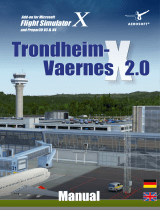 Sim-Wings Trondheim-Vaernes X v2.0 Benutzerhandbuch
Sim-Wings Trondheim-Vaernes X v2.0 Benutzerhandbuch
-
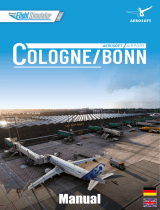 Sim-Wings Cologne Bonn Airport Benutzerhandbuch
Sim-Wings Cologne Bonn Airport Benutzerhandbuch
-
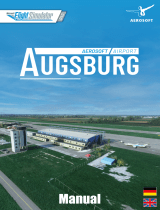 Sim-Wings Augsburg Airport Benutzerhandbuch
Sim-Wings Augsburg Airport Benutzerhandbuch
-
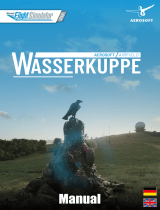 Sim-Wings Wasserkuppe Airfield Benutzerhandbuch
Sim-Wings Wasserkuppe Airfield Benutzerhandbuch
-
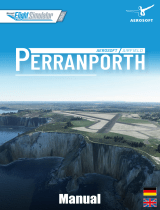 Sim-Wings Perranporth Airfield Benutzerhandbuch
Sim-Wings Perranporth Airfield Benutzerhandbuch
-
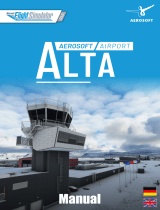 Sim-Wings Alta Airport Benutzerhandbuch
Sim-Wings Alta Airport Benutzerhandbuch
-
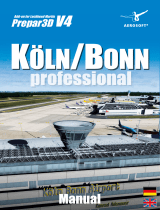 Sim-Wings Köln Bonn Professional Benutzerhandbuch
Sim-Wings Köln Bonn Professional Benutzerhandbuch
-
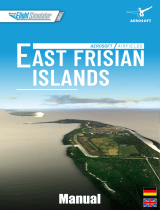 Sim-Wings East Frisian Islands Airfield Benutzerhandbuch
Sim-Wings East Frisian Islands Airfield Benutzerhandbuch
-
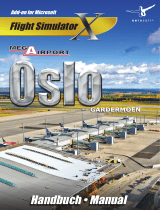 Sim-Wings Mega Airport Oslo Gardermoen X Benutzerhandbuch
Sim-Wings Mega Airport Oslo Gardermoen X Benutzerhandbuch
-
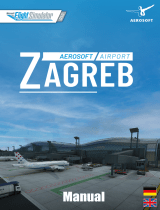 Sim-Wings Zagreb Airport Instructions Manual
Sim-Wings Zagreb Airport Instructions Manual





















